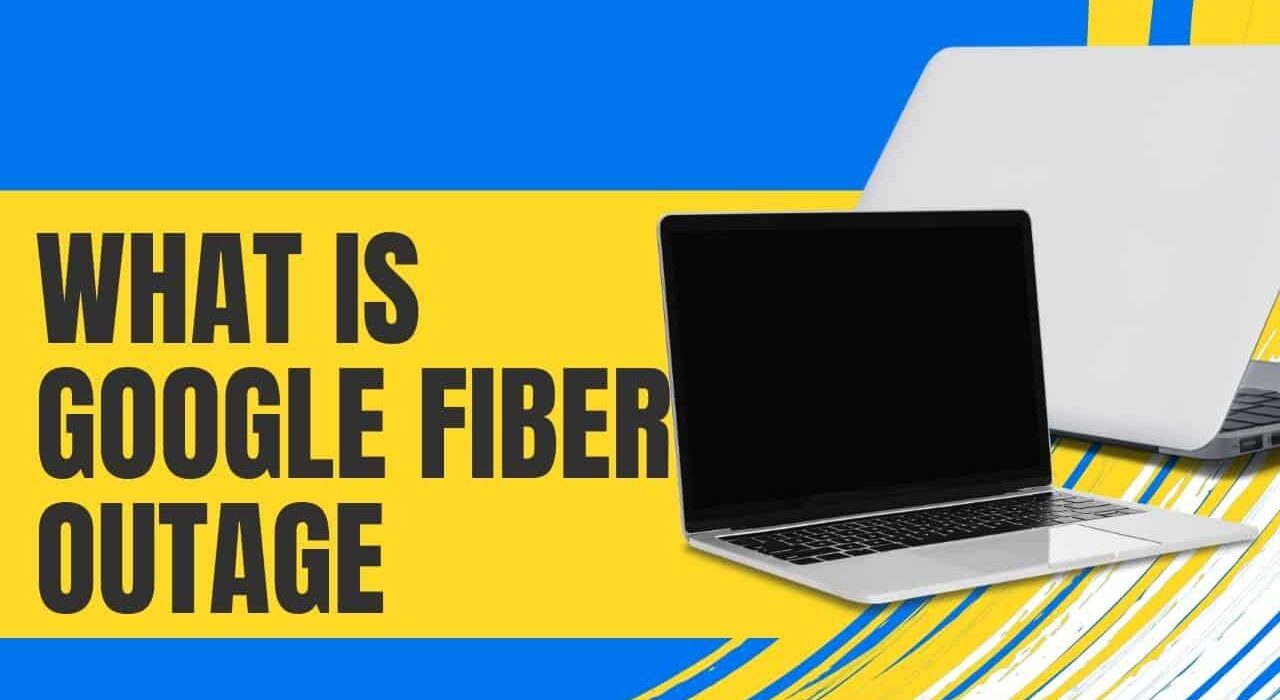A high-speed internet service offered by Google is called Google Fiber. A service of Google Fiber outage is a period of time when it is not available or functioning properly. A Google Fiber outage may happen for a number of reasons, including technical difficulties, maintenance needs, or infrastructure damage.
Customers may suffer a slow or nonexistent internet connection, difficulty using online services, or interruptions to their phone and television service during an outage. When there is a Google Fiber outage, Google normally strives to fix it as soon as possible and may post updates on the outage’s status on their website or social media accounts.
What is google fiber outage?
Google Fiber is a high-speed internet service that transmits data at extraordinarily rapid rates via fiber-optic cables. This service is accessible in a few US cities and provides download and upload rates of up to 1 Gbps (gigabit per second).
Google Fiber can, however, occasionally have outages, just like any other internet service. A service outage is a period of time when it is unavailable or isn’t functioning properly. A Google Fiber outage could happen for a number of reasons, including:
Technical difficulties: A complicated network of hardware, software, and communications forms the foundation of Google Fiber. An outage may result from a problem with one of these parts.
Upgrading or performing routine maintenance on Google’s infrastructure might be necessary, which could cause brief disruptions.
Infrastructure damage: Outside forces including weather conditions, building projects, or accidents can harm Google Fiber’s cables or equipment, causing outages.
Customers may suffer a slow or nonexistent internet connection, difficulty using online services, or interruptions to their phone and television service during an outage. It’s crucial to remember that not every outage affects customers equally; some customers may not be impacted while others may.
In the event of a Google Fiber outage, Google normally strives to fix the problem as soon as feasible. Consumers can use Google’s website or social media platforms to check the status of the outage. In addition, Google might include updates on the anticipated length of the outage and any actions users can take to lessen the impact on their services.
What is google fiber router?
The high-speed internet service offered by Google Fiber is connected to via a device known as a Google Fiber router, which offers wireless internet connectivity to devices in a home or workplace.
A fiber-optic cable is used to link the router, a small device that generally rests on a desk or shelf, to the Google Fiber network. Then, it transmits a Wi-Fi signal so that computers, cellphones, and tablets may wirelessly connect to it.
Customers receive a router from Google Fiber as part of their subscription, and the router is built to function perfectly with the Google Fiber network. The router has advanced features like parental controls, guest network access, and the option to prioritise particular devices or programmes. It can spread Wi-Fi throughout a house or business.
A network box that is optionally available from Google Fiber can be used to add extra features like phone and TV service. The network box joins the Google Fiber router and offers extra ports for adding things like TVs or gaming consoles.
Ultimately, the Google Fiber router is an essential part of the Google Fiber internet service and gives devices in a home or office dependable and quick wireless connectivity.

What is MSI App Player? Which Is Better MSI App Player Or Bluestacks in 2024?
What is MSI App Player? It’s a new development from the team of programmers at Android that attempts to streamline the emulator experience of users.

What is Money Control App? How Does Moneycontrol App Work? Know All About It In 2024
Moneycontrol app is a new and innovative program that will help you keep track of all your money-making and income earning. With this amazing application,

How To Write a Best Instagram Bio for Boys in 2024?
Are you looking for tips and ideas on how to write the best Instagram bio for boys? If your Instagram account is for boys, you
Why did Google Fiber fail?
The goal of the ambitious Google Fiber project was to use fiber-optic connections to deliver high-speed internet service to homes and businesses. Although the service had some successes, it experienced several obstacles along the way and eventually fell short of its intended adoption targets.
Google Fiber’s lack of success can be attributed to a number of factors, including:
Cost: Building the necessary infrastructure, including installing fiber-optic cables over entire cities, was necessary for Google Fiber. This was an expensive project, and as Google expanded its network, it encountered numerous administrative and financial difficulties.
Regulatory obstacles: Google had to contend with governmental challenges as well as opposition from current internet service providers who saw Google Fiber as a threat to their commercial models. In order to implement its service, Google Fiber frequently faced challenging and time-consuming regulatory obstacles from local governments.
Technical challenges: Google Fiber ran into technical challenges when installing its network in some locations, such as in communities with challenging topography or complicated rights-of-way. Because to these technological difficulties, Google Fiber has had to give up its aspirations to offer service in particular places.
Restricted rollout: Despite Google’s initial aspirations to introduce Google Fiber in dozens of American locations, the company eventually only did so in a few. Because of this constrained distribution, Google found it challenging to attain the economies of scale required to make the service profitable.
In general, Google Fiber has a difficult time establishing its network and obtaining public acceptance. Although the service had some successes, it eventually fell short of its initial objectives as a result of a number of financial, legal, logistical, and technical difficulties.
Why is my internet not working Google Fiber?
Your Google Fiber internet may not be functioning for a number of reasons. You might attempt the following troubleshooting steps:
Verify your Google Fiber equipment: Ensure that all of your Google Fiber equipment is switched on and properly connected. Verify that the equipment’s lights are on and that the power cables are correctly plugged in.
Restart your equipment: Try restarting all of your linked Google Fiber devices, including your router. Each device’s power cords should be unplugged. After a brief delay, plug them back in.
Look for disruptions: To check if there are any reported outages in your neighbourhood, visit the Google Fiber website or social media platforms. If there is a problem, Google might be trying to fix it.
Verify your connection. Make sure your devices are linked to the correct Wi-Fi network by checking this. Ensure sure your device is not too far from the router and that you have a strong signal.
Reset your device: If rebooting your device does not solve the problem, try resetting your Google Fiber device to the default settings. If you do this, you will lose any customised settings or configurations you have created, so be prepared.
If you’ve tried these solutions and your internet is still not working, get in touch with Google Fiber support for help. They might be able to set up a professional to come out and fix the problem or assist you in troubleshooting the issue.
Did Google Fiber shut down?
Actually, Google Fiber has not completely stopped operations; nevertheless, it has considerably reduced them. When Google Fiber first debuted in 2010, its goal was to use fiber-optic cables to deliver high-speed internet service to homes and businesses. The programme, however, had several difficulties and eventually fell short of its intended objectives of universal acceptance.
While Google Fiber hasn’t completely stopped operating, it has dramatically reduced its staff in recent years. Instead of entering new markets, Google Fiber is now concentrating on developing and growing its service in current ones. In contrast to the dozens of places it had initially intended to begin in, Google Fiber is now accessible in just 19 cities across the United States as of 2021.
In addition, Google Fiber is now more interested in supplying infrastructure for internet service providers (ISPs) than in offering internet service itself. In 2017, Google Fiber introduced Webpass, a company that uses wireless technology to deliver high-speed internet service to multi-unit residential complexes.
Overall, Google Fiber has considerably reduced its activities and switched its focus away from directly providing internet service to customers in favour of building infrastructure for ISPs, even if it hasn’t completely stopped operating.
Does Google Fiber work during a power outage?
In most cases, a power loss will result in Google Fiber internet service being unavailable. Because the Google Fiber network depends on electricity to function, it won’t be able to deliver internet service if the power goes out.
However, some Google Fiber hardware, like the Network Box or Fiber Jack, might be equipped with backup batteries that can deliver a certain amount of power in the event of a power failure. These batteries may not endure for a long time because they are made to just supply temporary power.
There are a few things you can do if you are suffering a power outage and your Google Fiber internet is not functioning:
Verify your tools: Ensure that your Google Fiber hardware is turned on and properly connected. If your equipment isn’t working properly, the backup battery may have run out of power.
The majority of the time, once the power is restored, your Google Fiber internet should resume working.
Employ a backup power source: If you require internet connectivity during a power outage, you might be able to run your Google Fiber equipment using a generator or battery backup.
In general, Google Fiber equipment is not built to function during a power loss, even if it may include backup batteries that can supply some limited power during an outage.
Does Google Fiber provide a router?
Indeed, Google Fiber delivers a router as part of its service. The router is called the Google Fiber Network Box, and it is included with every Google Fiber internet service. The Network Box is a high-performance router that is designed to provide fast and dependable Wi-Fi connectivity throughout your house or office.
In addition to offering Wi-Fi, the Network Box also has various other capabilities, including:
Superior security features: The Network Box incorporates advanced security features, such as firewall protection and automated upgrades, to help keep your network safe from internet attacks.
Parental controls: The Network Box has parental controls that allow you to restrict access to select websites or set time limits on internet usage for your children.
Network management tools: The Network Box offers network management tools that allow you to monitor your network performance and troubleshoot any difficulties that may emerge.
Overall, the Google Fiber Network Box is a crucial component of the Google Fiber internet service and is meant to deliver fast, dependable, and secure Wi-Fi coverage across your house or office.
What brand of router does Google Fiber use?
The router that Google Fiber supplies to its users is called the Google Fiber Network Box. The Network Box is a custom-designed router that is made solely for Google Fiber, meaning it is not available from any other brand or manufacturer.
The Network Box is a high-performance router that is designed to provide fast and dependable Wi-Fi connectivity throughout your house or office. It contains extensive security features, parental controls, and network administration tools to help you manage your internet connection.
In addition to the Network Box, Google Fiber now offers an optional Wi-Fi extender called the Google Fiber Network+ Box. The Network+ Box is meant to extend the range of your Wi-Fi signal, allowing you to enjoy greater coverage in parts of your house or company that may be beyond of range of the Network Box.
Ultimately, while the Google Fiber Network Box is a custom-built router that is not available from any other brand or manufacturer, it is meant to deliver fast, dependable, and secure Wi-Fi connectivity to Google Fiber subscribers.
Can I upgrade my Google Fiber router?
Yes, you may be able to upgrade your Google Fiber router, although it depends on the precise equipment and alternatives available in your area.
Google Fiber gives its users with a custom-designed router called the Network Box. While the Network Box is designed to deliver fast and dependable Wi-Fi coverage, some customers may prefer to utilise their own router or upgrade to a more complex router with extra functions.
If you want to use your own router with Google Fiber, you can do so by configuring the Network Box to operate in bridge mode. Bridge mode essentially shuts off the Network Box’s Wi-Fi and routing functions, allowing you to utilise your own router to handle those chores.
Instead, if you want to upgrade to a more advanced router, you may be able to do so by purchasing a compatible router from a third-party manufacturer. However, before purchasing a new router, it is vital to check with Google Fiber to ensure that the router is compatible with the Google Fiber network and that it will operate with your specific service package.
Therefore, while it is possible to upgrade your Google Fiber router or use your own router with Google Fiber, it is crucial to check that the equipment is suitable and that it will function with your specific service package.
Do you have to return Google Fiber router?
Yes, you will typically need to return your Google Fiber router (Network Box) to Google Fiber if you discontinue your Google Fiber internet service or if you upgrade your account and obtain new equipment.
The Network Box is normally sent to you as part of the equipment included with your service plan when you sign up for Google Fiber. In general, you must return the Network Box to Google Fiber if you discontinue service or change plans.
Customers are often given a pre-paid mailing label and instructions for returning the equipment by Google Fiber. You won’t be charged any further fees and will no longer be in charge of the equipment once it has been received and processed by Google Fiber.
It’s important to keep in mind that failure to return the equipment could result in additional fees or charges from Google Fiber, so it’s crucial to return it on time and in excellent shape.
Conclusion
In conclusion, Google Fiber offers high-speed internet service to residential and commercial clients in specific American cities. The service offers subscriptions with download speeds ranging from 100 Mbps to 2 Gbps and relies on fiber-optic technology to deliver quick and dependable internet.
As part of its service, Google Fiber offers a router (the Google Fiber Network Box), which is intended to deliver quick and dependable Wi-Fi connectivity across your house or place of business. Although you can use your own router or upgrade to a more sophisticated router, you might need to give the Google Fiber router back if you decide to cancel your subscription or change plans.







